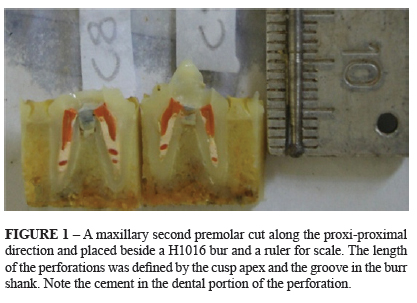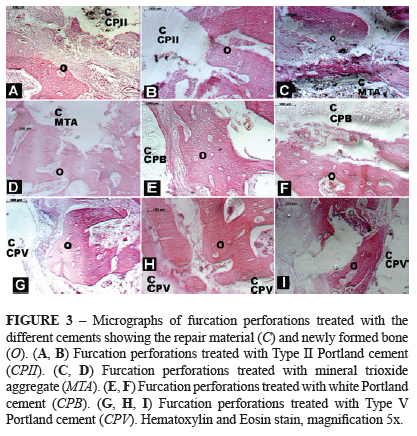PURPOSE: To evaluate the use of Portland cements with additives as furcation perforation repair materials and assess their biocompatibility. METHODS: The four maxillary and mandibular premolars of ten male mongrel dogs (1-1.5 years old, weighing 10-15 kg) received endodontic treatment (n=80 teeth). The furcations were perforated with a round diamond bur (1016 HL). The perforations involved the dentin, cementum, periodontal ligament, and alveolar bone. A calcium sulfate barrier was placed into the perforated bone to prevent extrusion of obturation material into the periradicular space. The obturation materials MTA (control), white, Type II, and Type V Portland cements were randomly allocated to the teeth. Treated teeth were restored with composite resin. After 120 days, the animals were sacrificed and samples containing the teeth were collected and prepared for histological analysis. RESULTS: There were no significant differences in the amount of newly formed bone between teeth treated with the different obturation materials (p=0.879). CONCLUSION: Biomineralization occurred for all obturation materials tested, suggesting that these materials have similar biocompatibility.
Biocompatible Materials; Calcium Sulfate; Dental Cements; Furcation Defects; Dogs







